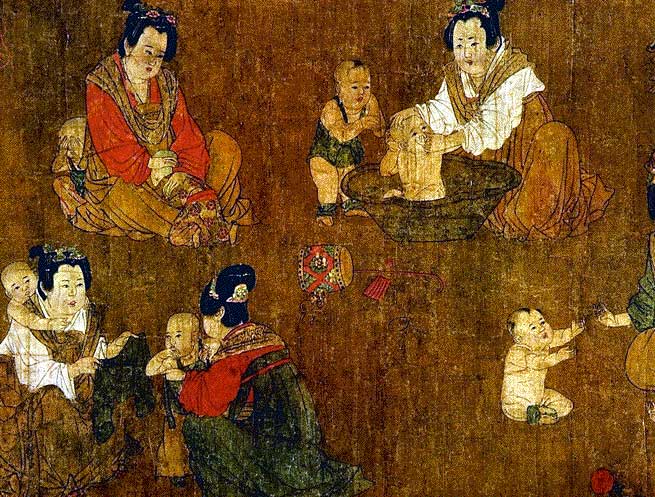Daily Life in China

Social life during the Shang period was uncomplicated. There was a ruling class made up of a king, aristocrats and a bureaucracy. This class directed the work of everyone else. Most of the common people were farmers; some cultivated the silk worm. Others were artisans who manufactured weapons or jewelry.
During the latter Zhou period, the aristocracies began to break down. Merit soon became a more important factor in determining achievement. It was a time of rapid growth of the cites: trade developed and roads and canals were built; rapid technological achievement was the order of the day. Both wrought and caste iron were developed, to be used both in the army and for agriculture purposes.
During the Han period, the center of Chinese society was the farmer. Farming was considered an honorable profession and farmers produced the bulk of the income of the Empire. The farmer's life was tenuous; his having to survive famine and floods made it so. Farmers in the south cultivated rice, while those in the North grew wheat and barely. Land use was well regulated with manure being used for cultivation and crop rotations being employed as a key component of yearly land usage. Urban life varied greatly with the wealthy sporting fine jewelry and occupying luxurious houses with fine furnishings. The wealthy were also keen patrons of the arts.
The poor lived in simple houses of mud and wooden planks, with thatch or tile roofs. Poor families had little furniture; their simple clothing consisted of cotton trousers and shirts in the summer, and wool or burlap clothing in the winter.
 >
>